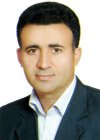| نویسندگان | رضا قضاوی-حیدر ابراهیمی |
|---|
| تاریخ انتشار | 2016-10-01 |
|---|
| نوع نشریه | الکترونیکی |
|---|
| نمایه نشریه | ISI ,SCOPUS |
|---|
چکیده مقاله
Groundwater consumption, climate condition, and human activities should affect the groundwater dynamics. In this study, the impact of land use change on groundwater dynamic was investigated based on water balance modeling using MODFLOW, GIS and Remote Sensing (RS). The land-use maps (1991, 2000, 2013 and 2017) were prepared with details using ENVI. The main land-use in the study area was rural, agricultural, and rangeland area. The main land-use changes between 1991 and 2013 were the expansion of agricultural area. According to results, agricultural area was increased by 190%, whereas rangeland area decreases by 80%. Groundwater and surface water are the main sources for irrigation. According to land-use planning, irrigated area will increase by 3% in 2017 compared to 2013. The results of mathematical modeling indicate that the annual water consumption in agricultural area should increase during 1991-2017. The results of the calibrated model show that return flow is a major contributor to groundwater recharge. Furthermore, the source of water used for irrigation (i.e., river and/or groundwater) has a high impact on groundwater. The impact of land-use change on different water balance components (recharge and discharge) was significant. Increase of agricultural areas cause an increasing of annual discharge, as well as an increasing of annual recharge from irrigation water. Yearly groundwater recharge from return flow in the study area should increase from 7.1 MCM in 1991 to 20.4 MCM in 2017. But groundwater decline should continue due to increasing of agricultural water demand and over-pumping.
